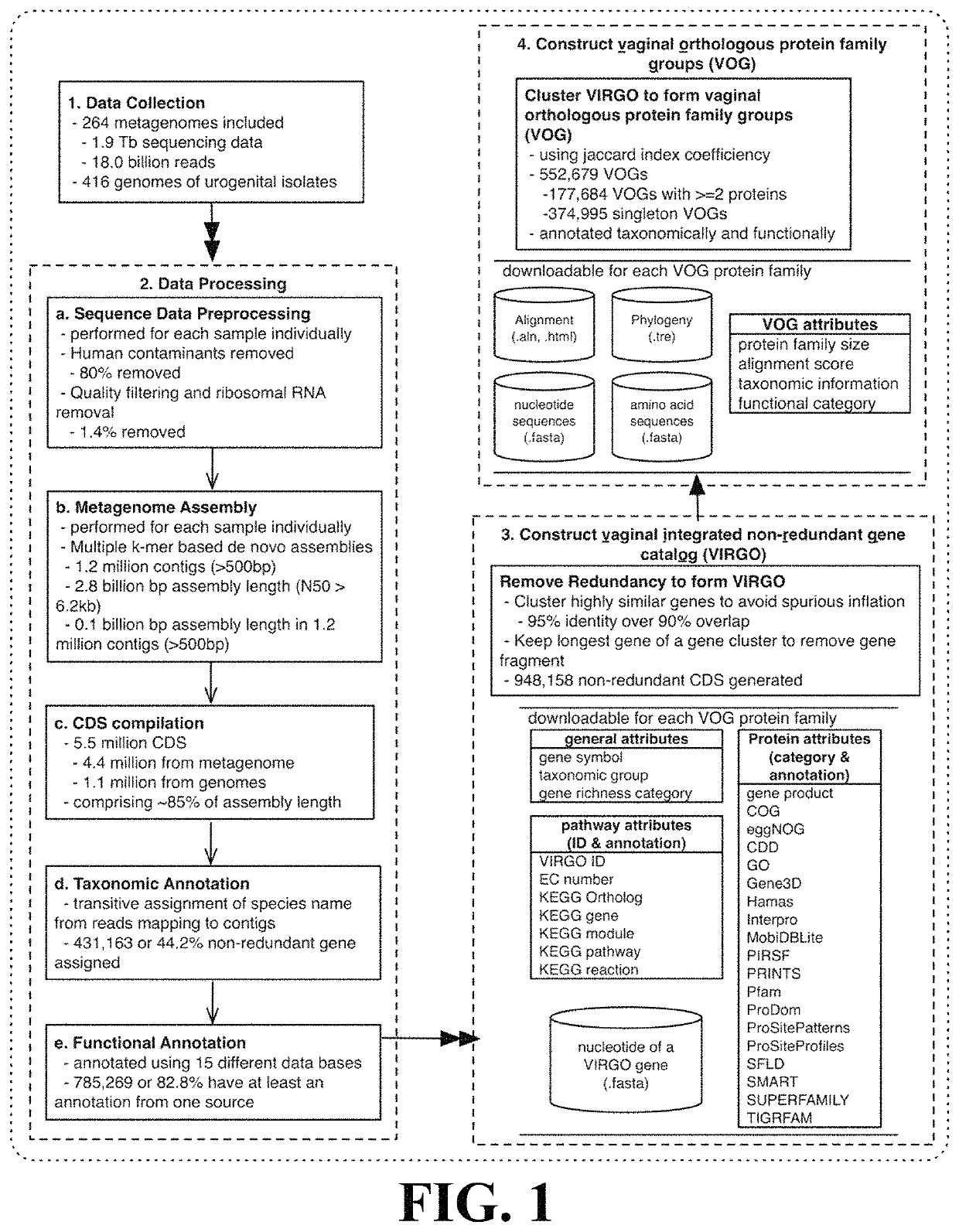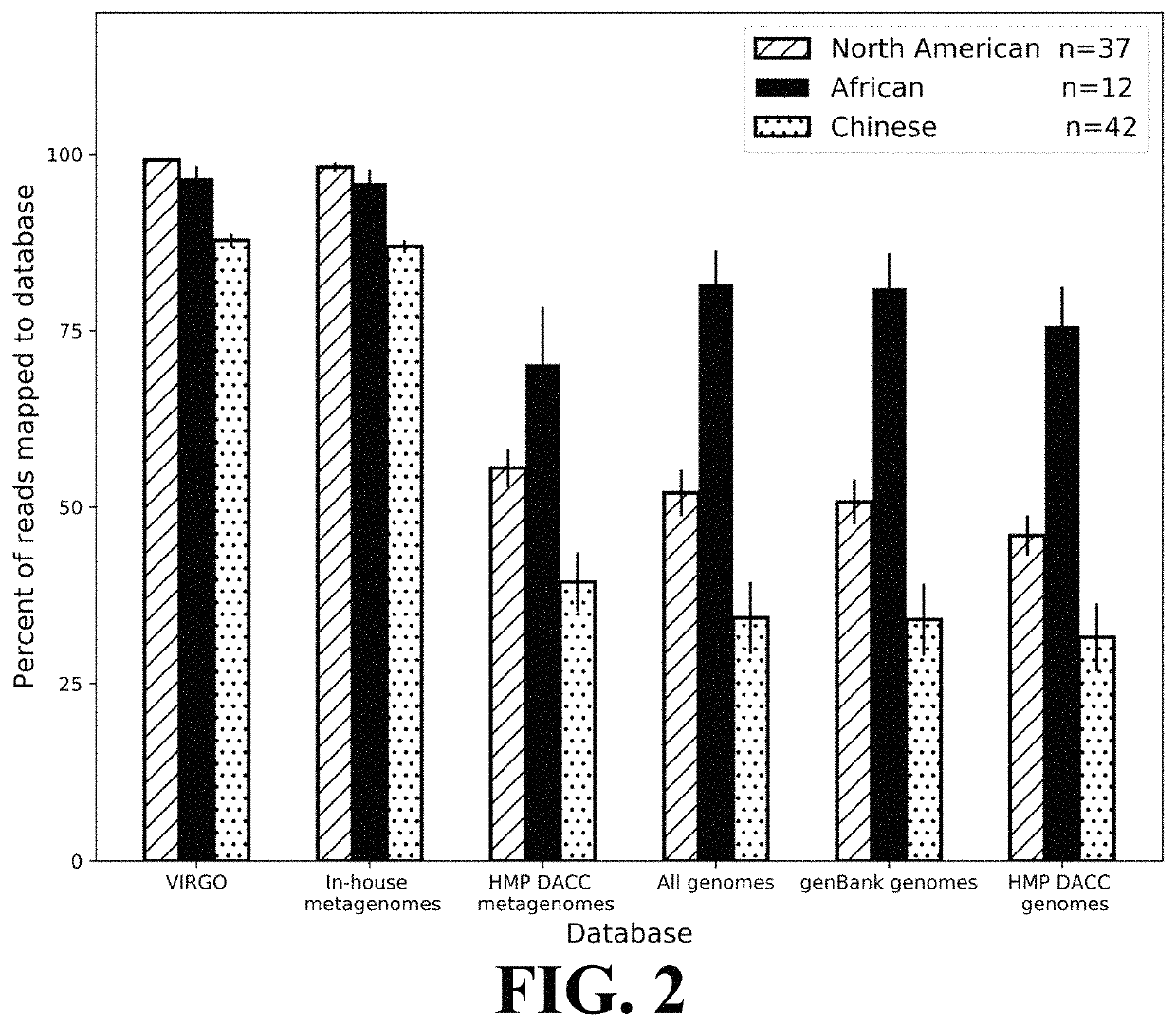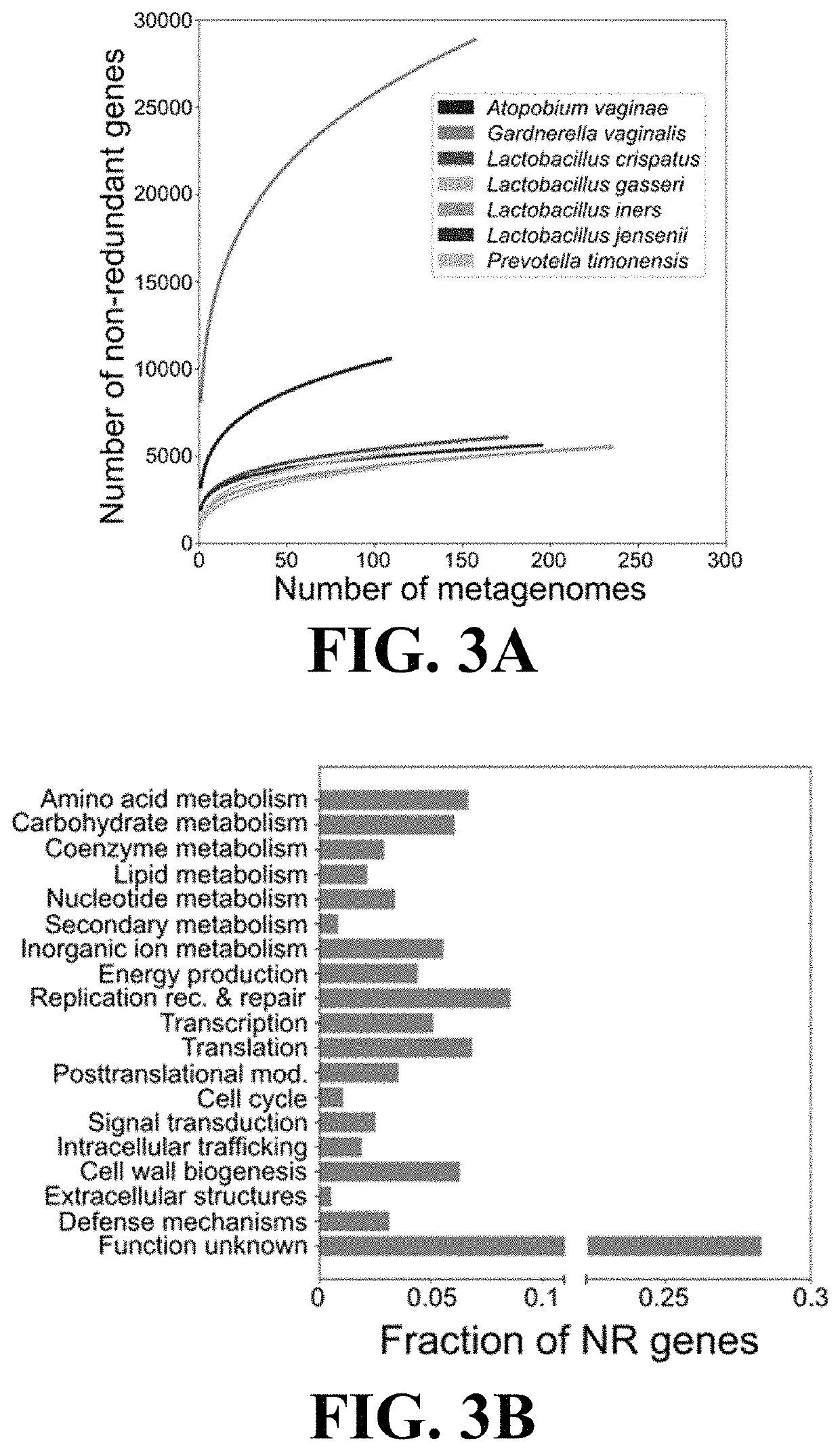Microbiome-based informed method to formulate live biotherapeutics
a biotherapeutic and informed technology, applied in the field of microbiome-based informed methods to formulate and/or use live biotherapeutics, can solve the problems of difficult analysis and integration of complexes, difficulty in identifying intraspecies diversity, and difficulty in identifying features that drive correlations between the microbiome and health using multi-omics sequencing data. achieve rapid advancement of sequencing throughput, reduce the cost of sequencing, and high scalability
- Summary
- Abstract
- Description
- Claims
- Application Information
AI Technical Summary
Benefits of technology
Problems solved by technology
Method used
Image
Examples
example 1
ion of Human Vaginal Non-Redundant Gene Catalog
[0103]This Example describes the construction of a human vaginal non-redundant gene catalog (VIRGO) according to the methods of the present invention.
[0104]211 newly sequenced vaginal datasets and 53 vaginal datasets downloaded from the HMP data repository were obtained. Genome sequences of deposited urogenital bacterial isolates were downloaded from multiple databases, including GenBank, Integrated Microbial Genomes & Microbiomes (IMG / M), and the HMP referencing genome database. After removing duplicate genomes under the same strain names, genomes of 322 urogenital bacterial strains representing 152 bacterial species were included.
[0105]The 211 newly sequenced metagenomes were generated as follows: whole genomic DNA was extracted from 300 μL aliquots of vaginal ESwab re-suspended into 1 mL of Amies transmport medium and preserved at −80° C. Cells were then lysed using a combination of enzymatic digestion (including mutanolysin, lysosta...
example 2
atics Analysis
[0112]This Example demonstrates the comprehensiveness of reference gene catalogs generated according to the present invention.
[0113]The comprehensiveness of VIRGO was tested using vaginal metagenomics data from 91 vaginal metagenomes obtained from North American women not included in the construction of VIRGO or sequenced in this study, as well as African and Chinese women, which allowed for determination of the utility of VIRGO to analyze metagenomes from other populations. The sequence reads were first mapped to the VIRGO contigs using Bowtie v2 (parameters --threads 4 --sensitive-local -D 10 -R 2 -N 0 -L 22 -i 5,1,1.75 -k 1 --ignore-quals --no-unal, as described in Ben Langmead and Steven L. Salzberg, 9 Nature Methods 357 (March 2012), the entirety of which is incorporated herein by reference), according to the criteria described in Qin. Any unmapped reads were compared to the GenBank nt database (as described in NCBI Resource Coordinators, “Database resources of th...
example 3
and Functional Annotation of VIRGO
[0116]This Example demonstrates the utility of reference gene catalogs produced according to the present invention to characterize vaginal microbial communities.
[0117]The non-redundant genes of VIRGO were annotated with a rich set of taxonomic and functional information. Genes that originated from an isolate sequence genome were automatically assigned that species name. For metagenomes, taxonomy was assigned to a metagenomic contig by mapping the sequence reads making up that contig to the Integrated Microbial Genomes (IMG) reference database (v400) using Bowtie v1 (parameters: “−1 25 --fullref --chunkmbs 512 --best --strata -m 20”). A secondary filter was applied so that the total number of mismatches between the read and the reference was less than 35 and the first 25 bp of the read matched the reference. Using the results of this mapping, taxonomy was assigned to all genes encoded on the contig that matched the following four criteria: (1) at lea...
PUM
| Property | Measurement | Unit |
|---|---|---|
| volume | aaaaa | aaaaa |
| volume | aaaaa | aaaaa |
| structure | aaaaa | aaaaa |
Abstract
Description
Claims
Application Information
 Login to View More
Login to View More - R&D
- Intellectual Property
- Life Sciences
- Materials
- Tech Scout
- Unparalleled Data Quality
- Higher Quality Content
- 60% Fewer Hallucinations
Browse by: Latest US Patents, China's latest patents, Technical Efficacy Thesaurus, Application Domain, Technology Topic, Popular Technical Reports.
© 2025 PatSnap. All rights reserved.Legal|Privacy policy|Modern Slavery Act Transparency Statement|Sitemap|About US| Contact US: help@patsnap.com



